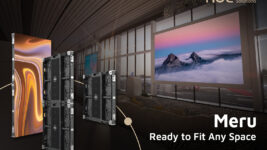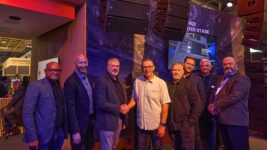DANCE
7 Jul 2025
BANGARRA’S ILLUME
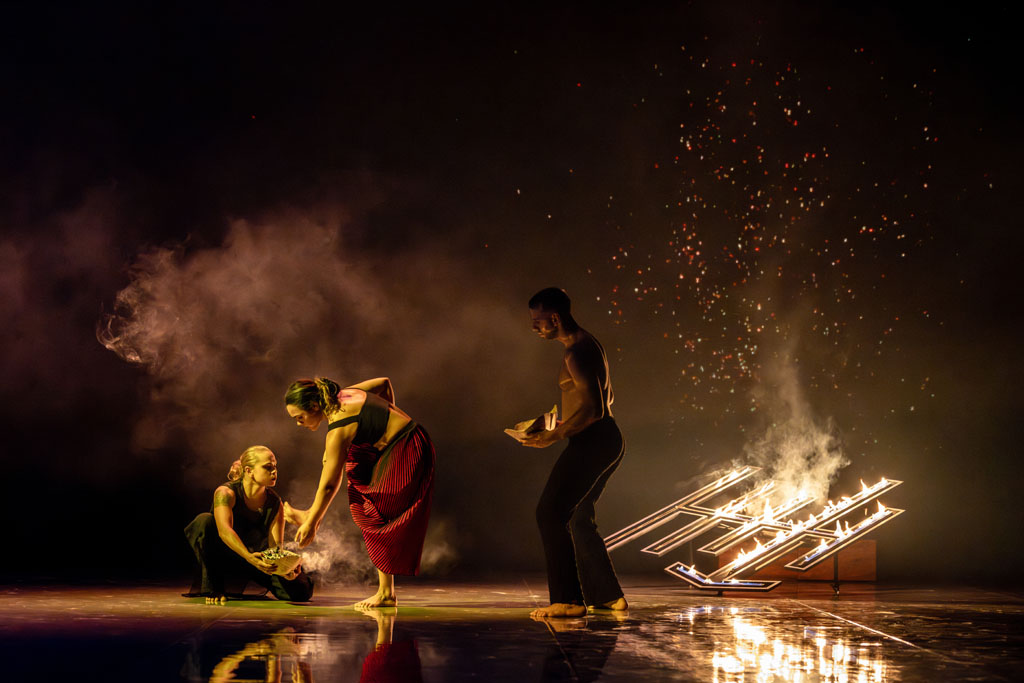
Subscribe to CX E-News
Modern Technology, Ancient Stories
After 36 years of existence and 20 years as resident in the Sydney Opera House Drama Theatre, Australia’s leading First Nations dance company Bangarra have taken their place in the Opera House’s premiere Joan Sutherland Theatre. The Joan Sutherland is now their official home when resident in the Sydney Opera House.
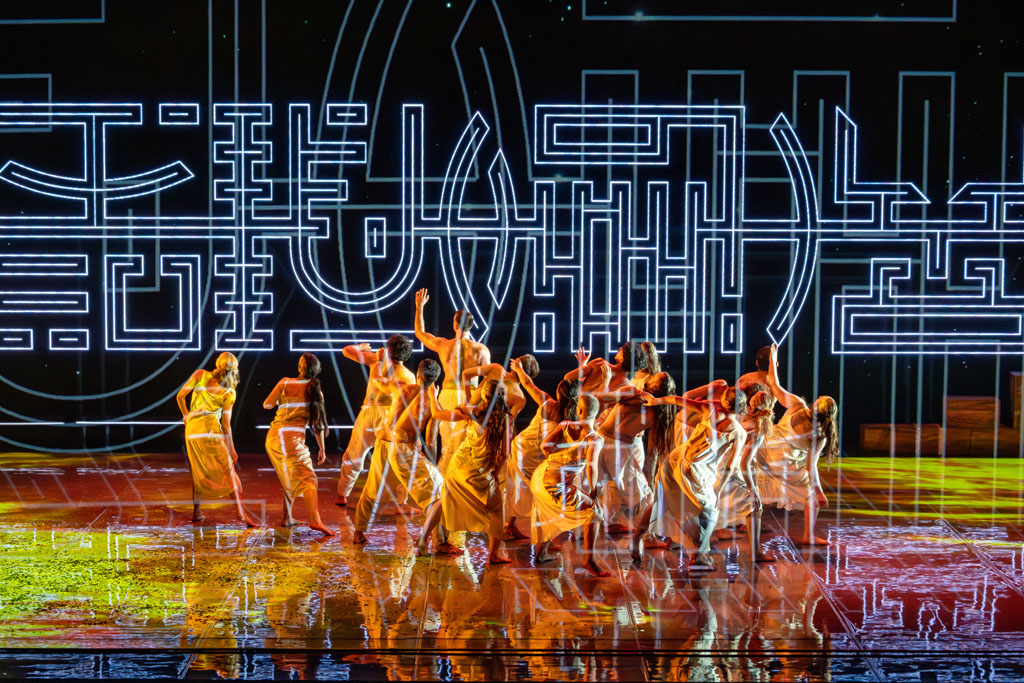
Bangarra have chosen their debut season at the JST to premiere Illume, a collaboration between Mirning Choreographer Frances Rings and Goolarrgon Bard Visual Artist Darrell Sibosado, which explores the awe of light, and its function as a bridge between the physical and spiritual worlds. With many aspects of First Nations knowledge and culture tied to observing the stars, Illume also charts the impacts of light pollution in a climate emergency.
Darrell Sibosado is based in Lombadina, WA, the Country of the Goolarrgon Bard people, in the area of the Kimberley also known by its colonial name of the Dampier Peninsula. The Bard people were recognised as the people of the land, while Jawi were the people of the islands. Together, they share systems of kinship, lore and social organisation. Bardi and Jawi Country is divided into seven clan areas, Ollongon, Goolarrgon, Ardiol, Iwanyland Inalaburu, Jawi, Banararr and Buniol.
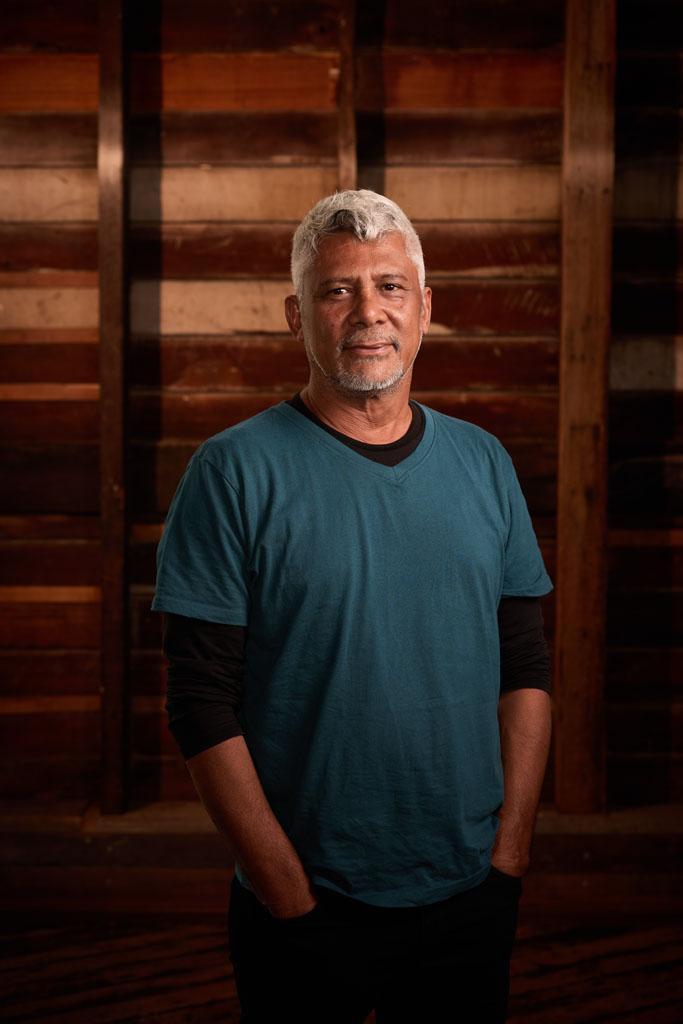
Illume takes audiences on a journey through Darrell’s Country, and into the iridescent light of mother-of-pearl whose characteristics give life, ritual, sustenance and hope. For thousands of years, the language of light has energised and sustained Indigenous cultures, connecting people, environment, and kinship through nature’s rhythms. This luminous force bridges the physical and spiritual realms, carrying ancestral wisdom and power.
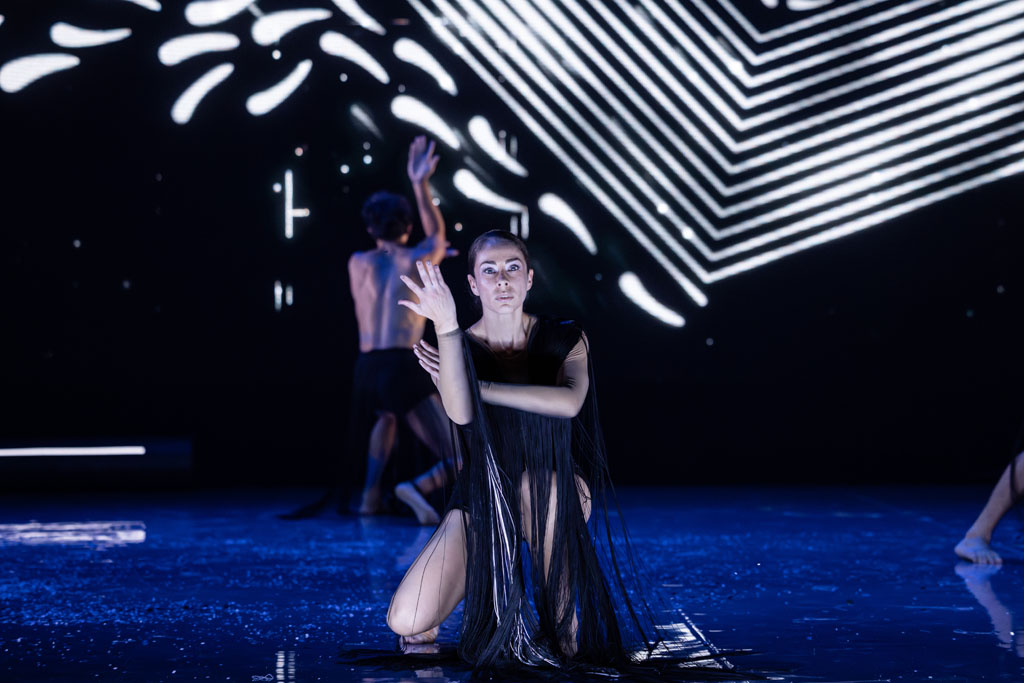
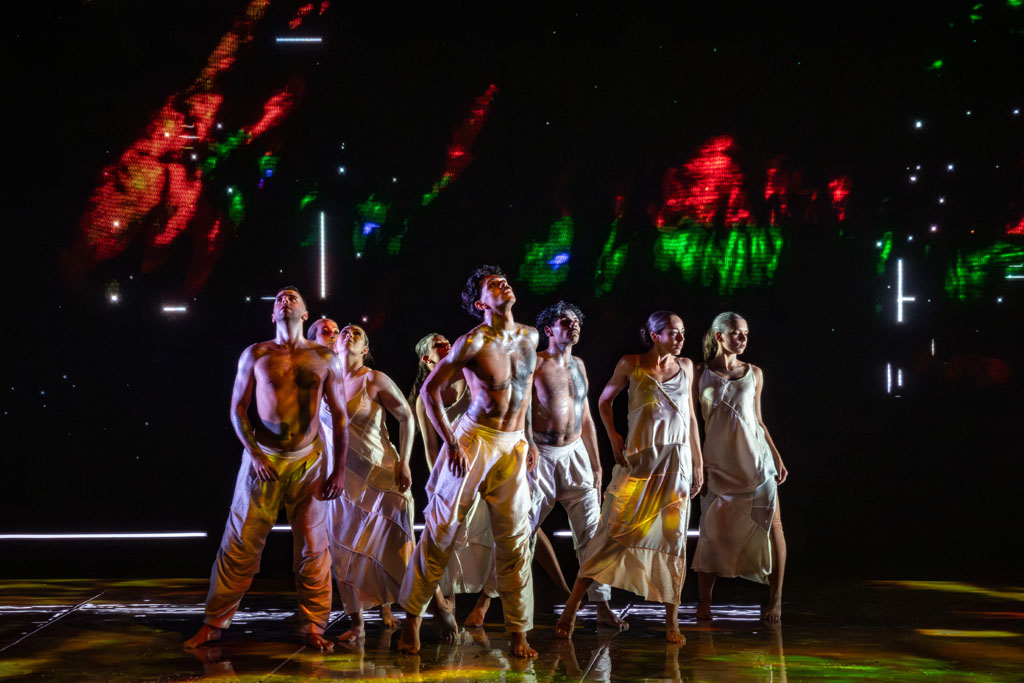
This landmark work is the first time Bangarra has collaborated with a First Nations visual artist. Illume examines light from both choreographic and visual art perspectives. The combination of artforms creates a multidimensional experience that integrates dance and visual art design elements alongside First Nations cultural storytelling.
Running at The Joan Sutherland Theatre in June, Illume is now travelling to Perth’s Heath Ledger Theatre 10-13 July, then touring to Albany’s Entertainment Centre on 18 July, Canberra Theatre Centre 25-26 July, Brisbane’s QPAC 1-9 August, Darwin’s Entertainment Centre 15-16 August, and Arts Centre Melbourne 4-13 September.
In a first for Bangarra, Illume utilises a suitably impressive upstage LED screen, measuring 13.2 metres by 6 metres, comprised of ROE Visual CB5 LED panels. It was provided as part of a new Company Partnership with Adelaide’s Novatech Creative Event Technology, who have also supplied Brompton LED processing and Barco projectors to the production.
“We’ve come on board with Bangarra as a Company Partner, which further demonstrates our commitments to support the Arts, especially where innovation is concerned,” say Leko Novakovic, Managing Director of Novatech. “This is Bangarra’s first production with an upstage LED screen, and they’ve loved the end result, so we’re sure there will be more.”
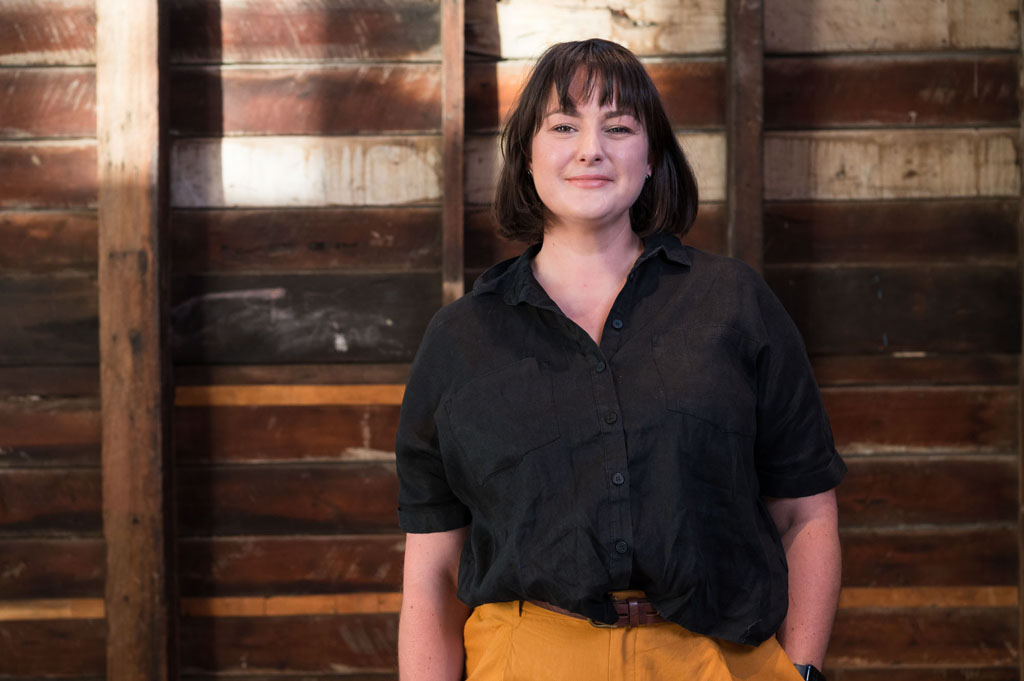
The Production Manager – Cat Studley
Cat Studley, Production Manager with Bangarra for eight years, already had an existing relationship with Novatech. “We’ve dry hired some of their Wahlberg winches before, as well as some comms and bits and pieces, but nothing of this scale,” she explains. “When the design was becoming finalised for Illume, I approached them with what is a massive ask, and could we make it work? They couldn’t have been more amazing, and they have gone above and beyond.”
Cat helped in the initial processes with the design team to shape the work, getting it to the point of being able to bump in and out of the wildly different venues it will visit on tour.
“While we’ve done plenty of upstage projection before, we were looking for something that was a bit punchier, and that could provide different visual layers,” elaborates Cat. “We’re using a ghostMESH downstage, which provides a beautiful look in certain scenes. We wanted the ability to be able to layer between upstage and downstage. Working with Darrell Sibosado’s artwork, we had to make sure we had enough flexibility so we could explore and play, but still get exactly what he needed out of it. We toyed with making a physical set piece and having it track up, down, and across, but knew in tech that we were going to lose so much time in each venue. The LED screen could cover everything we needed artistically, plus bring even more ideas to life. It was the best way to go.”
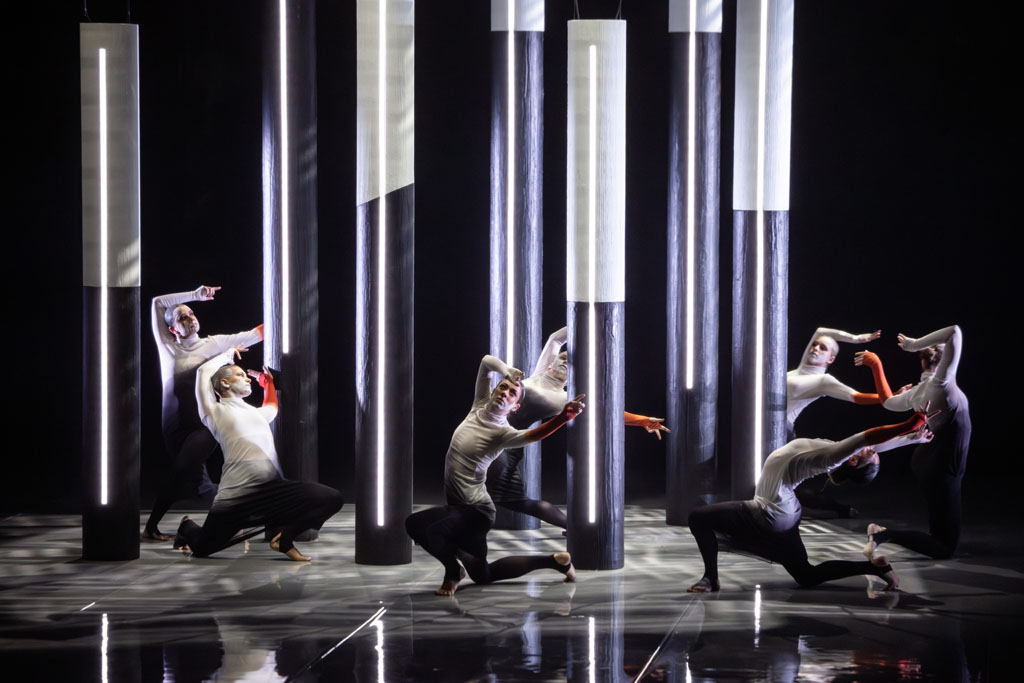
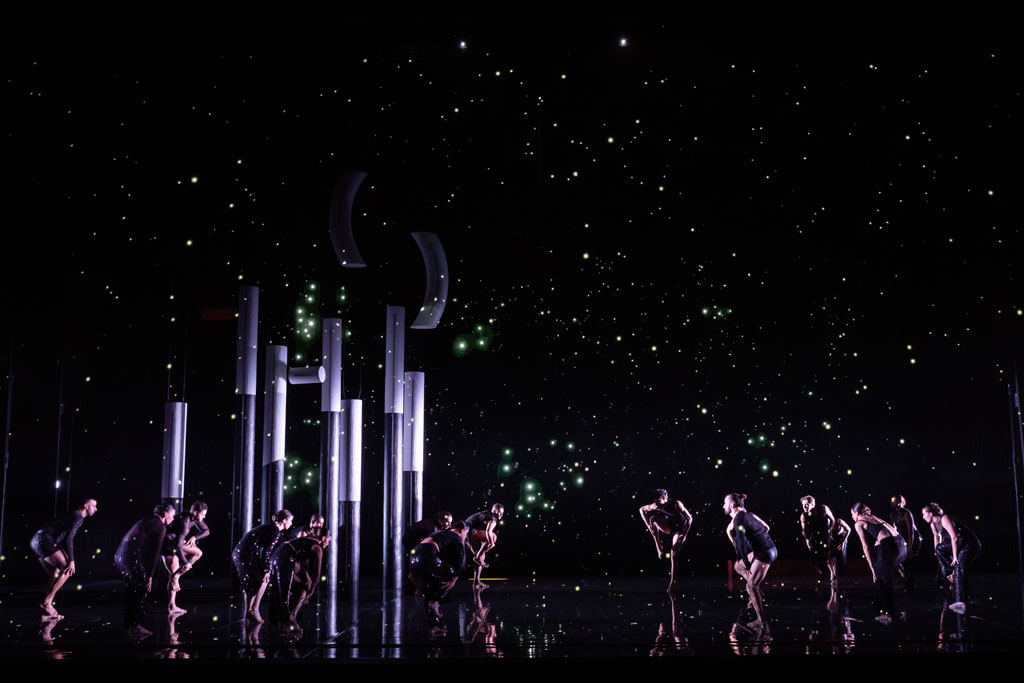
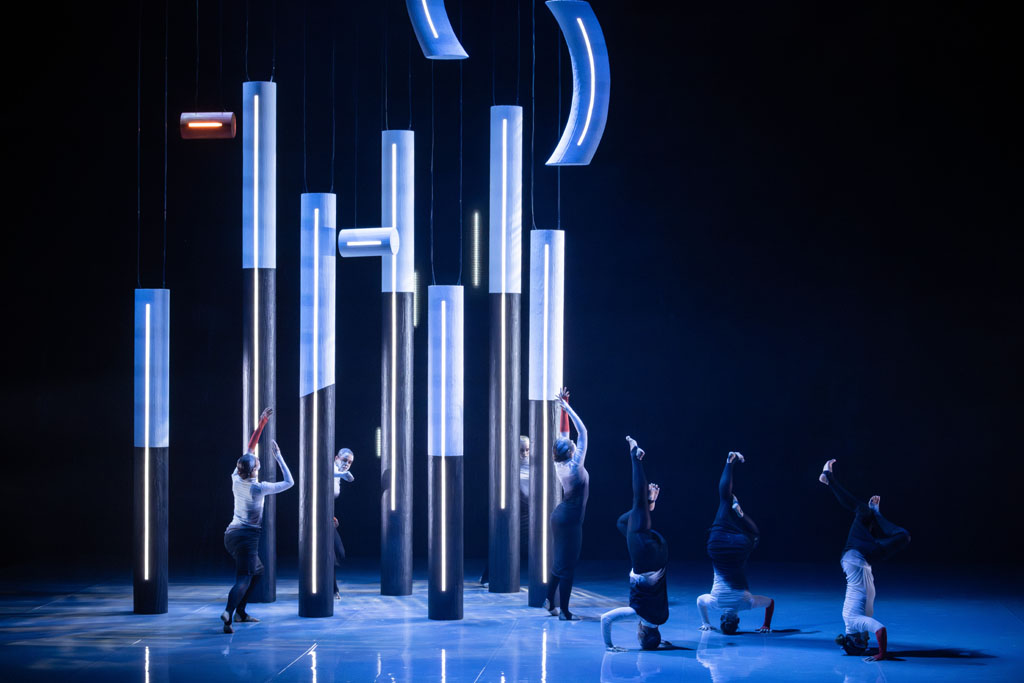
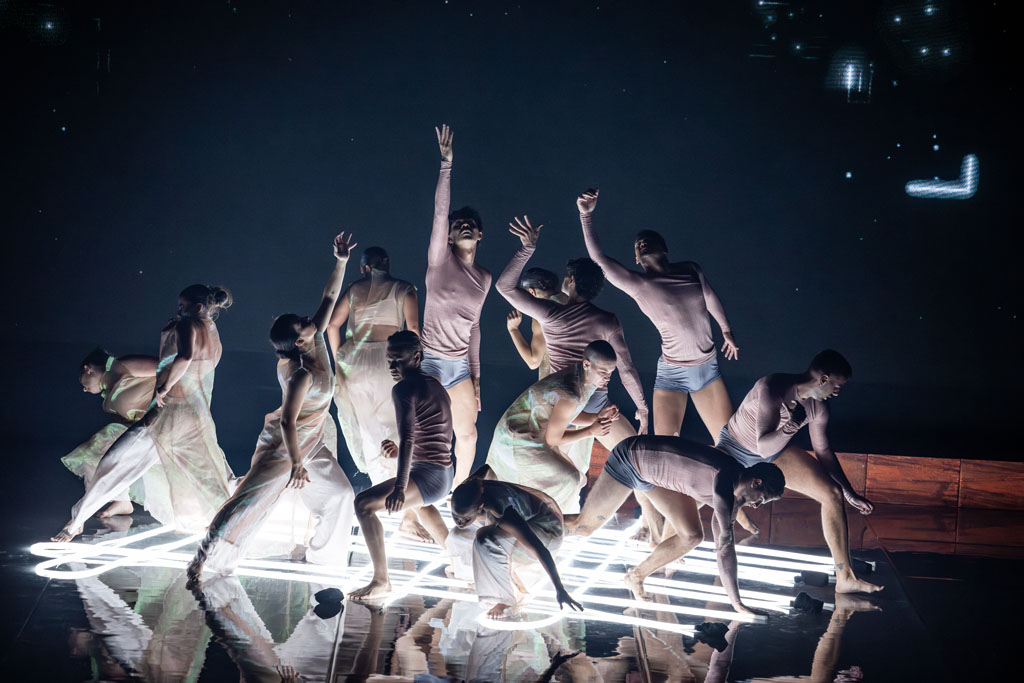
Two Barco UDM 4K22 projectors with UST 0.43:1 snorkel lenses hang flown above stage, just upstage from the proscenium, providing floor projection. “There’s one beautiful scene with a projected whirlpool,” comments Cat, “It’s a stunning use of projection. On top of that, we have a Barco UDX 4K32 projector mounted out the front, which projects onto the downstage ghostMESH. We have two other major set elements; there are seven ‘trees’ – cylindrical poles that are broken into a bottom black section and top white section. They all have inlaid LED tape. The other major set element is a giant 3D printed trumpet shell; it’s 3.5 metres tall!”
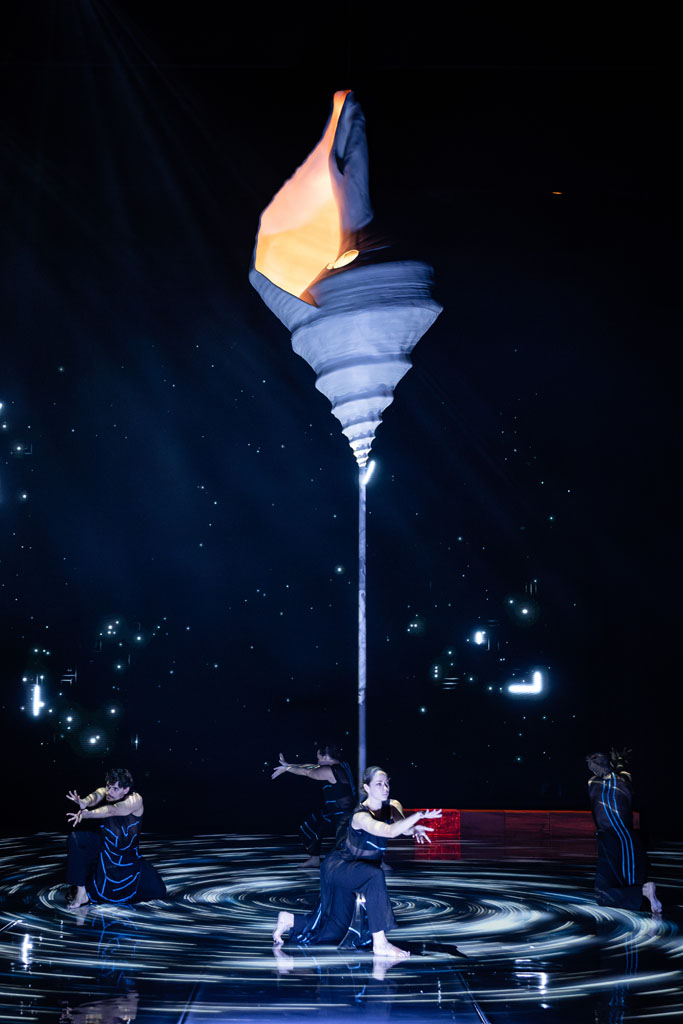
And where does one get a 3.5 metre shell 3D printed? “There’s a company up near Byron Bay called Studio Kite,” says Cat. “They have a huge 3D printer they call CADzilla. They use recycled materials, and as an Indigenous company with policies around care for Country, it fits with our ethos. We also worked with Ed Horne of Horne Art Studios, inland from Byron, for the internal work within that shell, inside, there’s LED tape and an Ayrton Kyalami laser fixture. The laser shoots from the bottom of the shell onto the floor, and the dancers interact with it.”
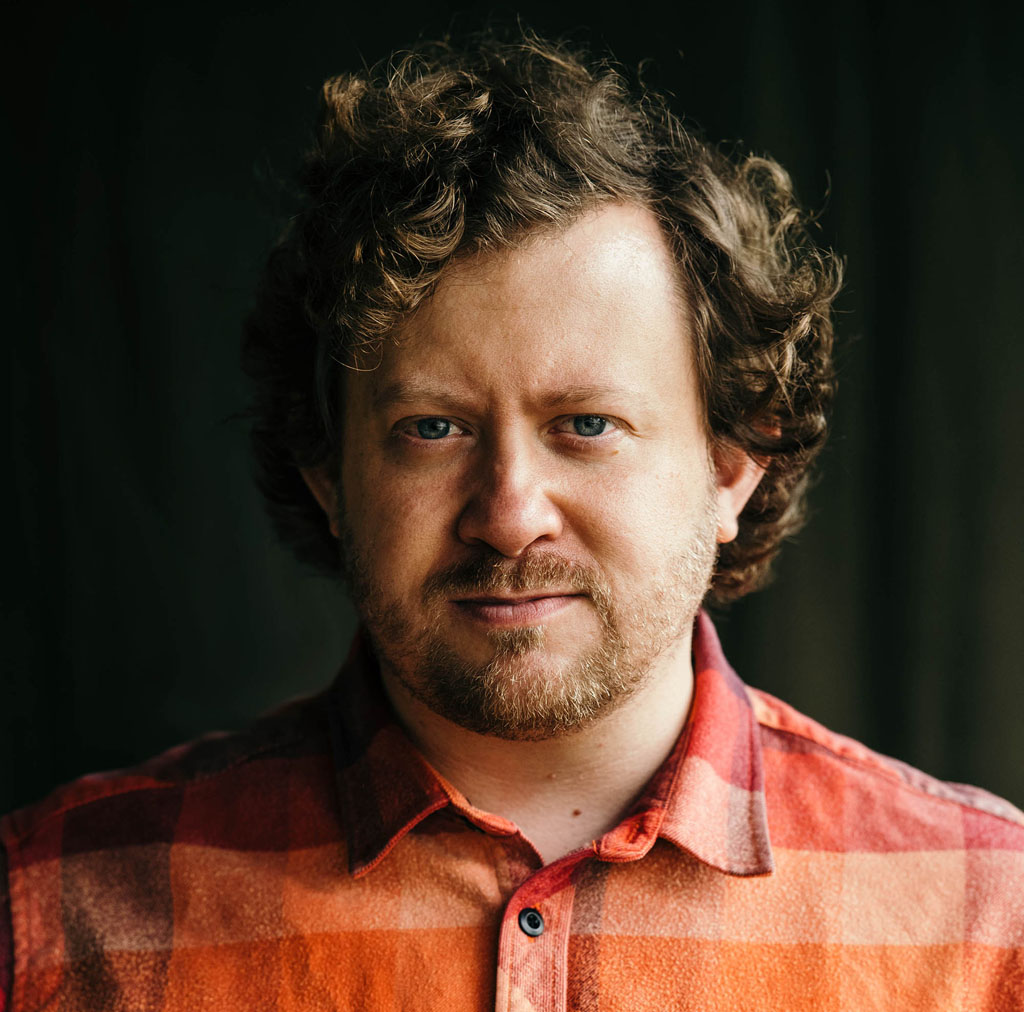
The Video Designer – Craig Wilkinson
Craig Wilkinson is Creative Director of optikal bloc, a Brisbane-based award-winning video projects collective that specialises in reimagining spaces and transporting audiences through live visual experiences and video marketing. Illume is the first project he has worked on with Bangarra.
“I was brought in around week three or four of the 12-week rehearsal and design process,” relates Craig. “The team had decided that LED and projection technology in conjunction were the solution to give the work opportunity and contrast while staying faithful to Darrell Sibosado’s art. I confirmed with them that this was the right technical way to go.”
“Once we actually got into the creative process beyond ‘what is the technical specification?’ it was a very collaborative,” continues Craig. “Every time we met, it was always myself, lighting designer Damien Cooper, set designer Charles Davis, Darrell Sibosado, and Frances Rings. We never worked in isolation.”
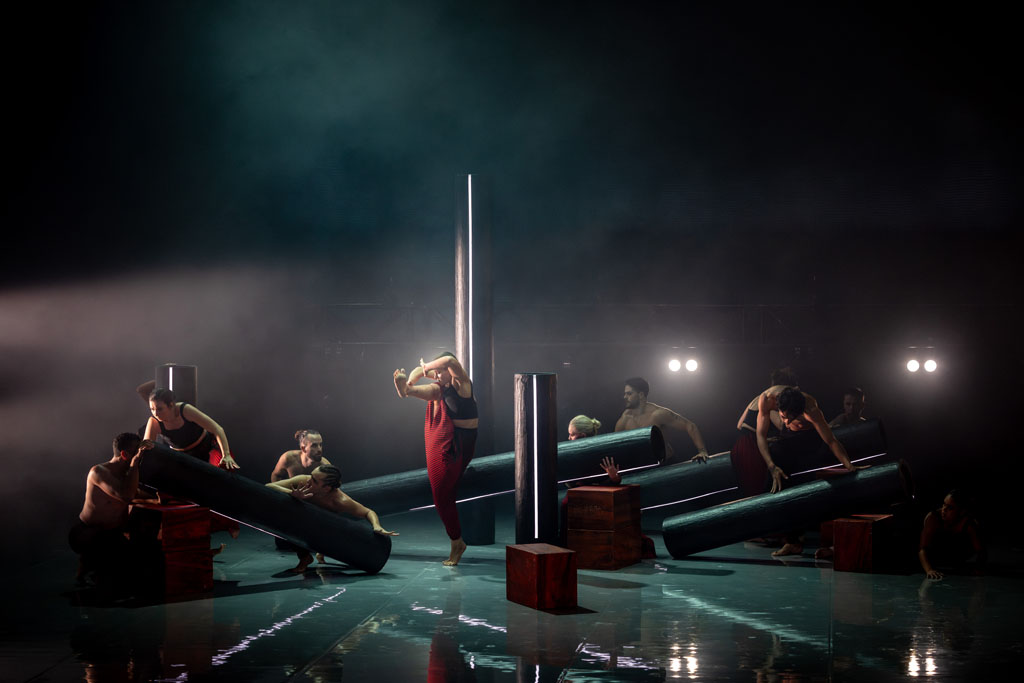
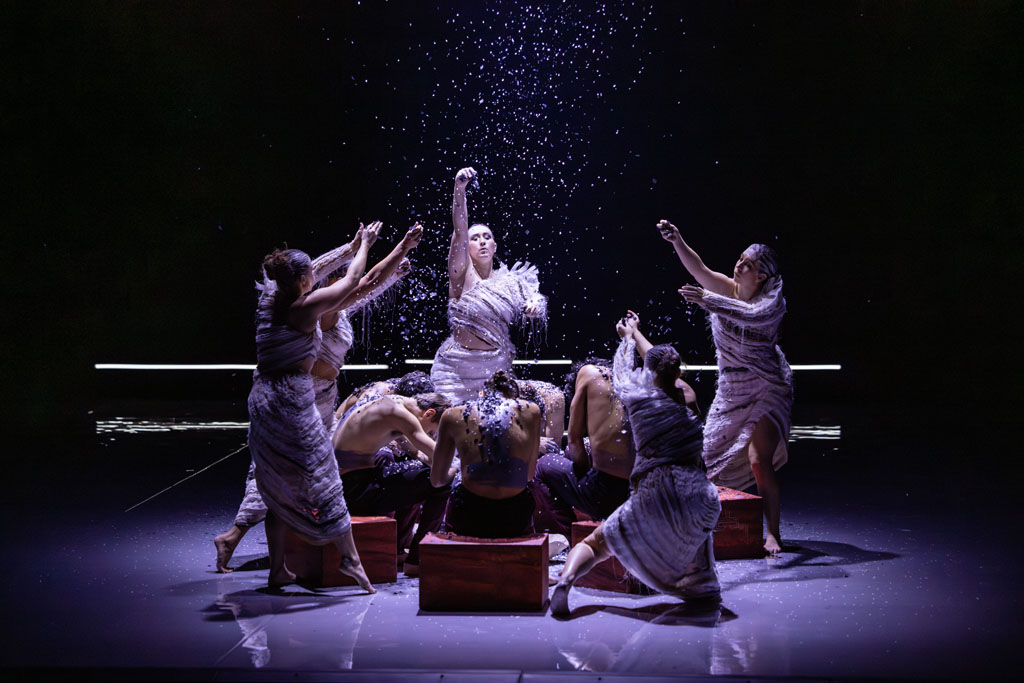
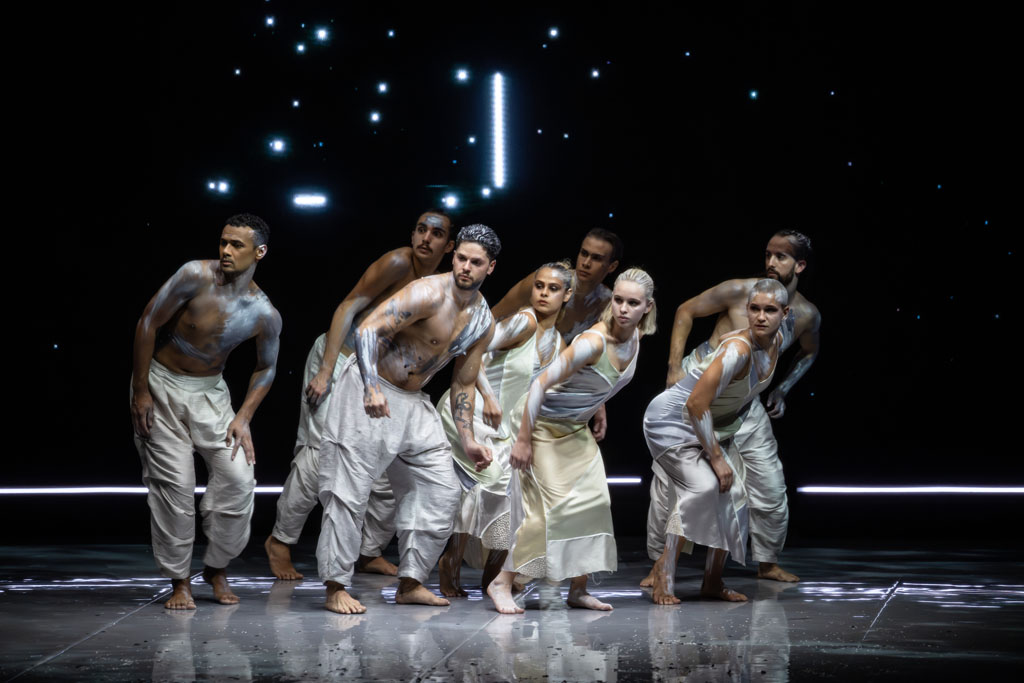
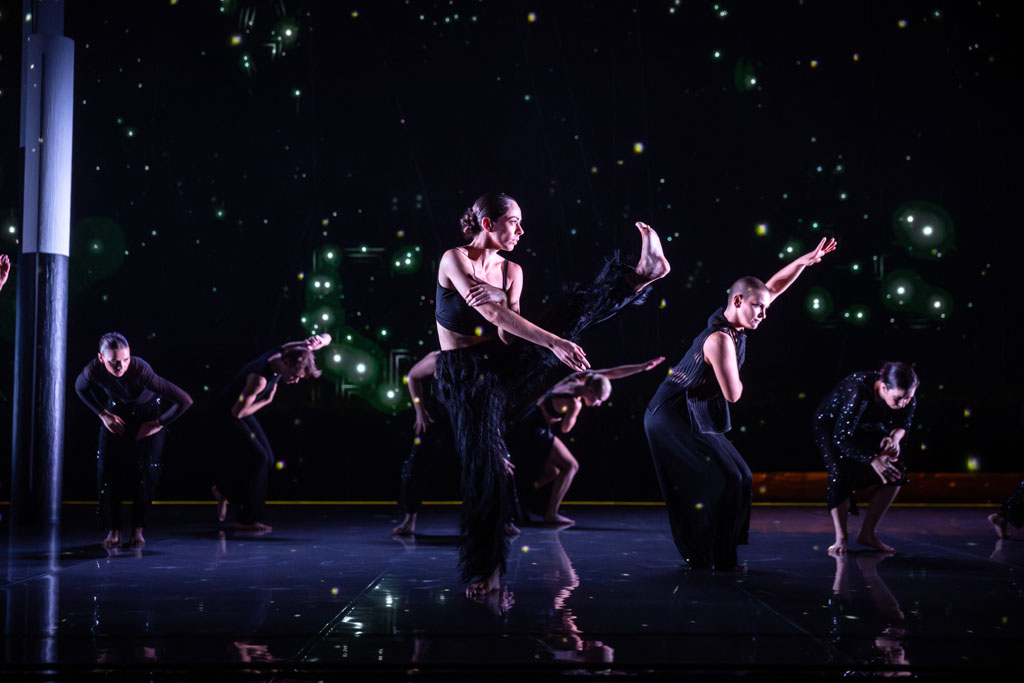
Craig employed Adobe’s After Effects software for animation, Blackmagic’s Davinci Resolve software for video editing and rendering, and Maxon’s Cinema 4D software for particle generation. “We used Cinema 4D to create the more complex particle systems within the work,” Craig confirms. “We’d create other elements in After Effects, and then Resolve was our finishing tool. We used Resolve to do a level of previs, like comping the wall and the floor layers in a very simple way, so that throughout rehearsals, Fran and Darrell and the team could see how some sequences might look. It was a pretty lo-fi way of doing previs, but given the time and how the work was developing, it was the easiest way for us to do it. I was also working remotely from Brisbane, so I was sending things through Dropbox. It wasn’t until the last week of rehearsals that I was actually in the space with the team.”
Designed to tour, Craig chose QLab 5 to run the show. “Using QLab was more about the touring team; giving them a solution that they were familiar with and that they could troubleshoot,” Craig divulges. “With any kind of video system you put on a show, if the team don’t know it, it creates problems. For the longevity of the work, QLab is the right choice.”
On tour, there’s a touring video/audio tech, a head of department, and a deputy that work across both disciplines. The show is predominantly timecode driven, with video and lighting tied to timecode coming from the audio system. QLab is fed directly into the LED screen’s Brompton SX40 processor.
“We hang a shark’s tooth gauze in front of the LED screen,” continues Craig. “The reason for that is that we’re trying to hide the frame and the overall dimensions of the screen. We never use a full image on the screen, because it lives in the light sculpture world. We wanted the screen to feel borderless, and the gauze helps us to do that.”
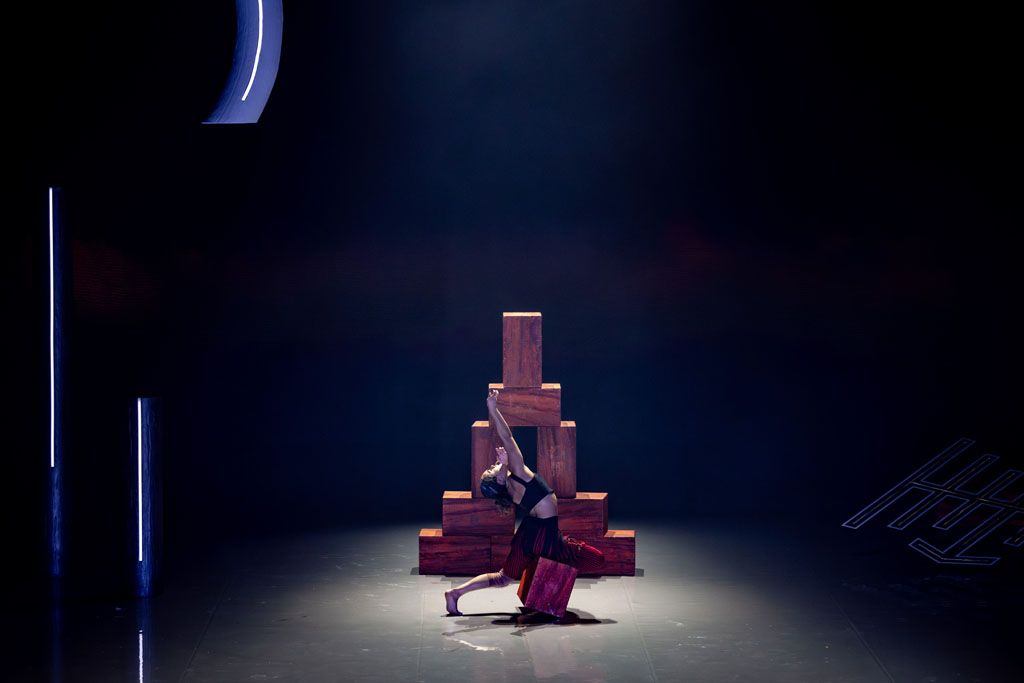
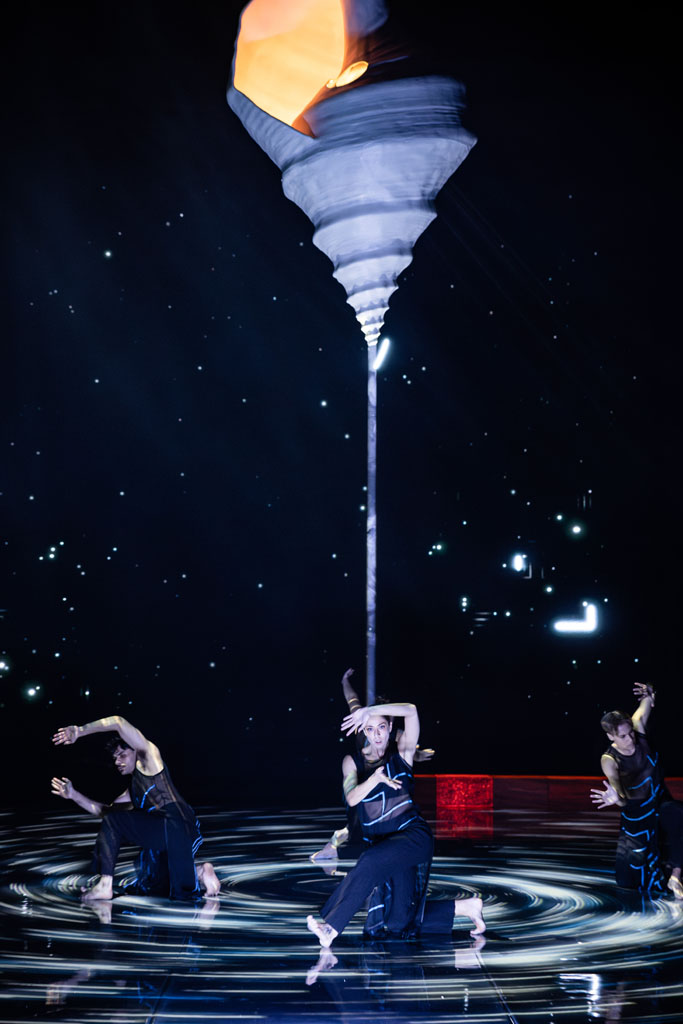
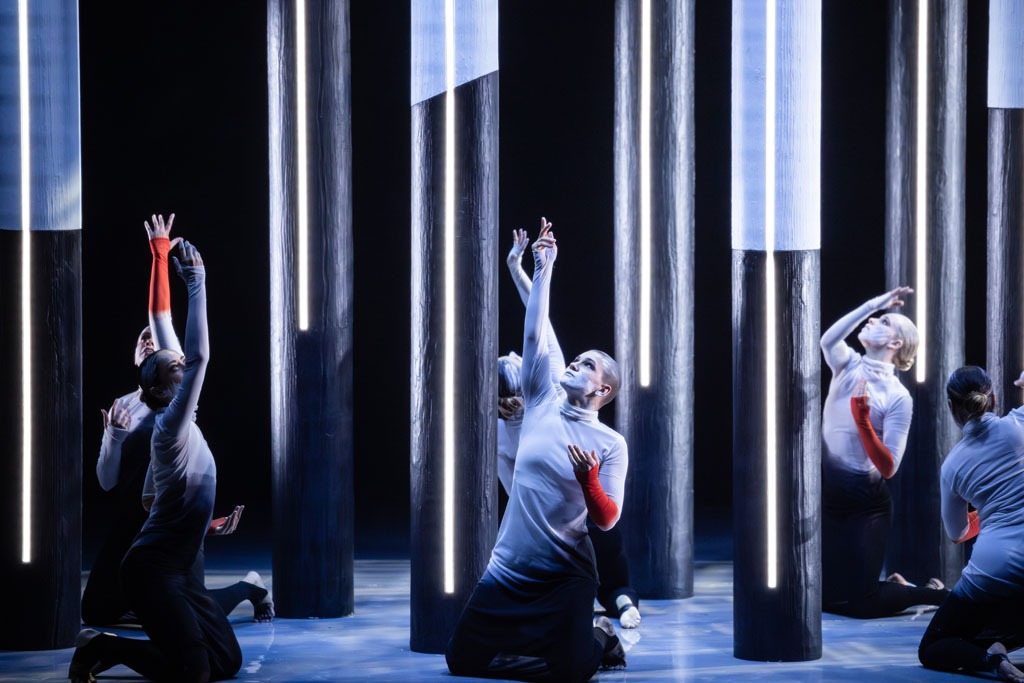
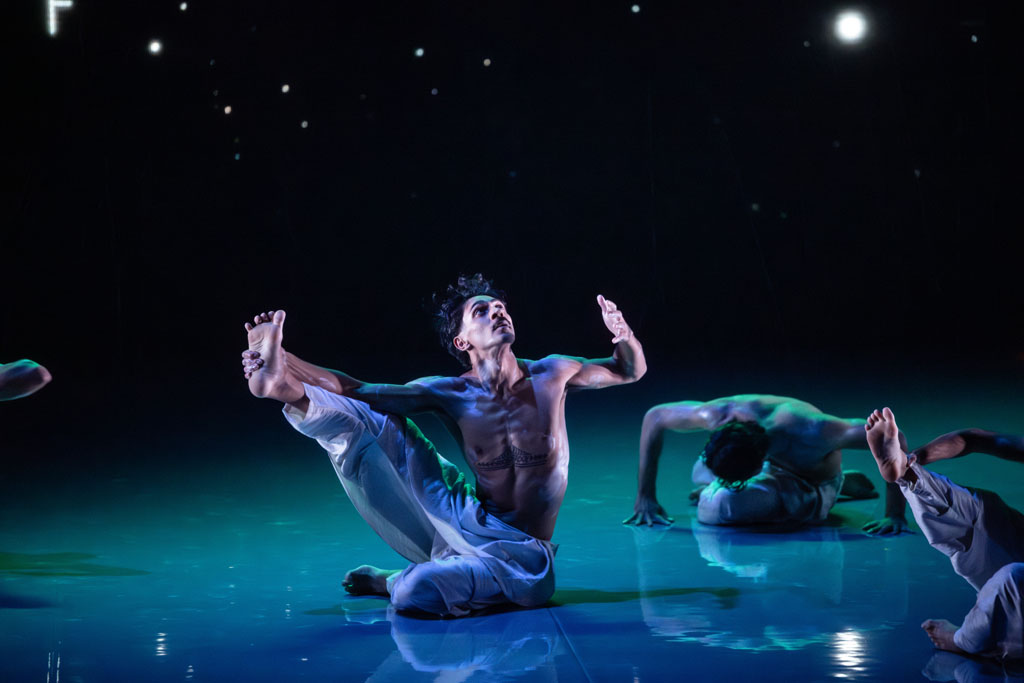
With both the LED screen and three high- powered projectors being major sources of light, how did Craig work with lighting designer Damien Cooper to ensure that video and lighting complement, and not interrupt each other? “Having a very collaborative process throughout rehearsals helps infinitely,” states Craig. “Understanding what’s illuminating the space; not just Damien and I, but Darrell, Frances, and Charles as well. One of the brilliant things about this particular process was that it was the non-verbal responses where, as a video designer, I saw what Damien was doing, and vice versa, and we responded in the moment. It was effortless in that respect, and really considered from both departments together. I think we blur the lines between what is lighting and what is video. Illume had to be a ‘world of light’, so understanding that was the main thing.”
A secret weapon on the production was Vor, a software designed by American company Borealis Solutions. Vor records video and data in real time and saves that as a simple video file. In addition to video and audio, it records timecode, lighting cues, and automation data. It can then be played back through the same systems. There’s no post-processing, and no proprietary software needed.
“We used Vor for recording rehearsal runs which gave us the ability to replay archival video with timecode and LX cues embedded live within it almost instantaneously,” enthuses Craig. “It meant that we could solve issues quite quickly. It would record and playback our QLab and Eos data. If something wasn’t quite right, we stopped recording, I’d literally pull up the video straight away, scrub through and go, ‘ah, it was three seconds into that lighting cue that that issue happened’. It’s a really valuable tool. We used it throughout previews and performances as well, but it’s incredibly helpful during tech. It’s even got an iPhone app; as long as your iPhone is connected to your network, you can literally use the device in your pocket.”
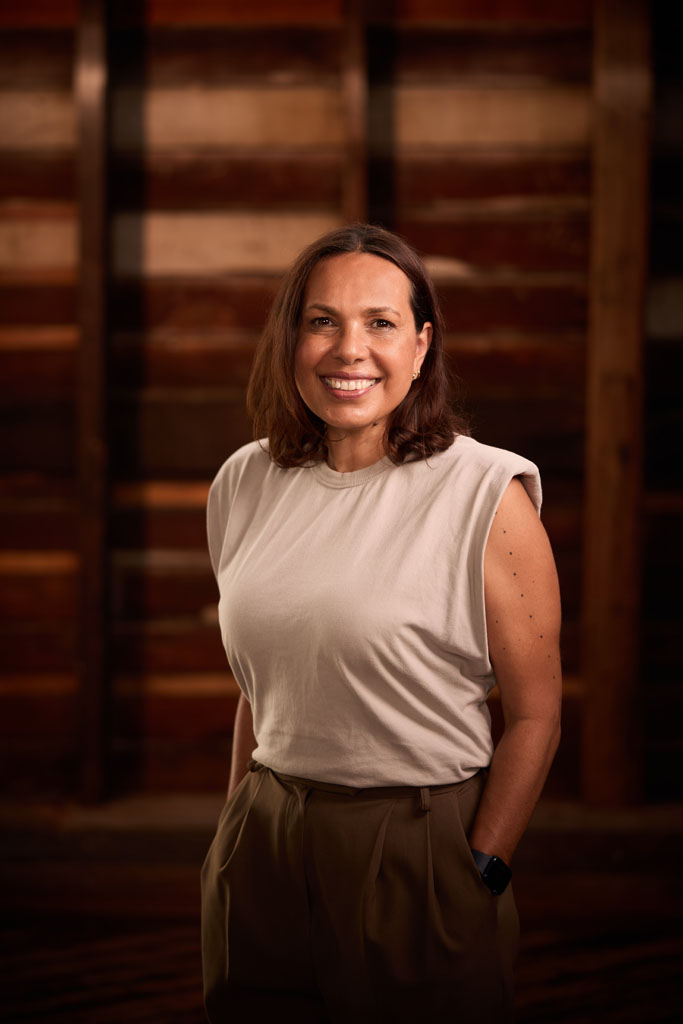
Frances Rings – Director and Choreographer
While we can talk about screen resolution, brightness, software, and technical specifications, it’s supporting the story and art that all the gear and effort is there for. “As a choreographer, I am always looking at how each of the design elements find a balance with each other to create a balance and draw out the story; it’s always about the story,” says Frances. “We have strong elements, but probably none more powerful than Darrell’s artwork and we needed to find the right way to honour and bring this to life. The LED screen illuminated the symbols and gave them the opportunity to be nuanced or animated, depending on the section. It gave us many options and brought Darrell’s work to life in such a compelling way.”
“Lighting and the LED screen have such an important role in this work,” continues Frances. “Both Damien and Craig worked tirelessly to ensure there was cohesion between the two. In a funny way, the dancers also assisted with this, and carried a big role with smoothing transitions and softening these two big elements. The magic happens when it’s just the marrying of all the effects and you can’t tell what projection, LED or lighting is. It’s just a full embodied experience.”
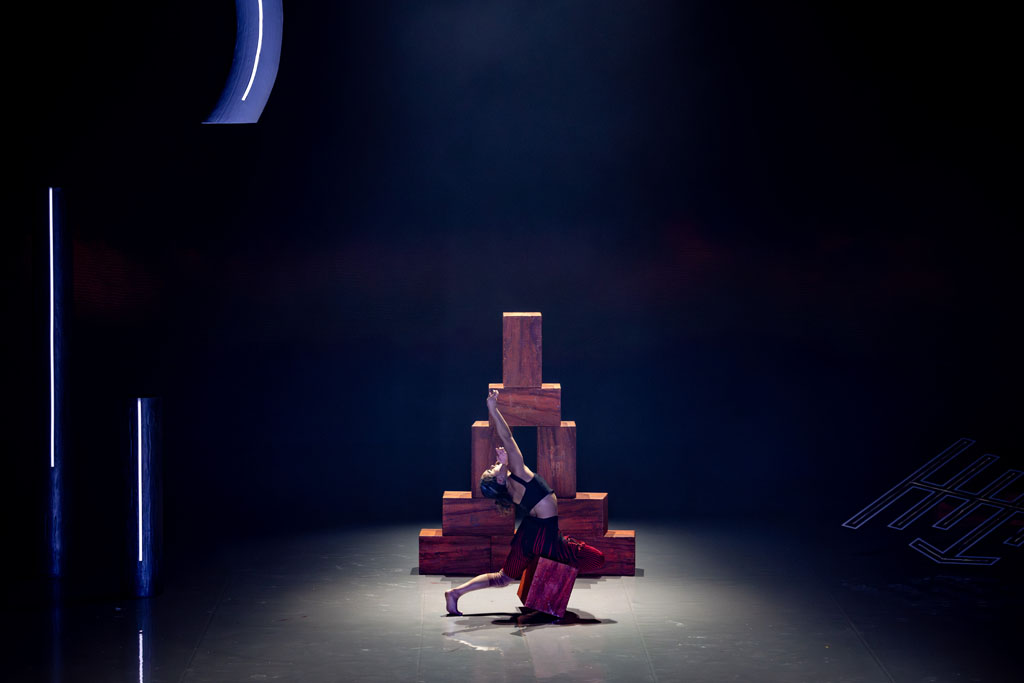
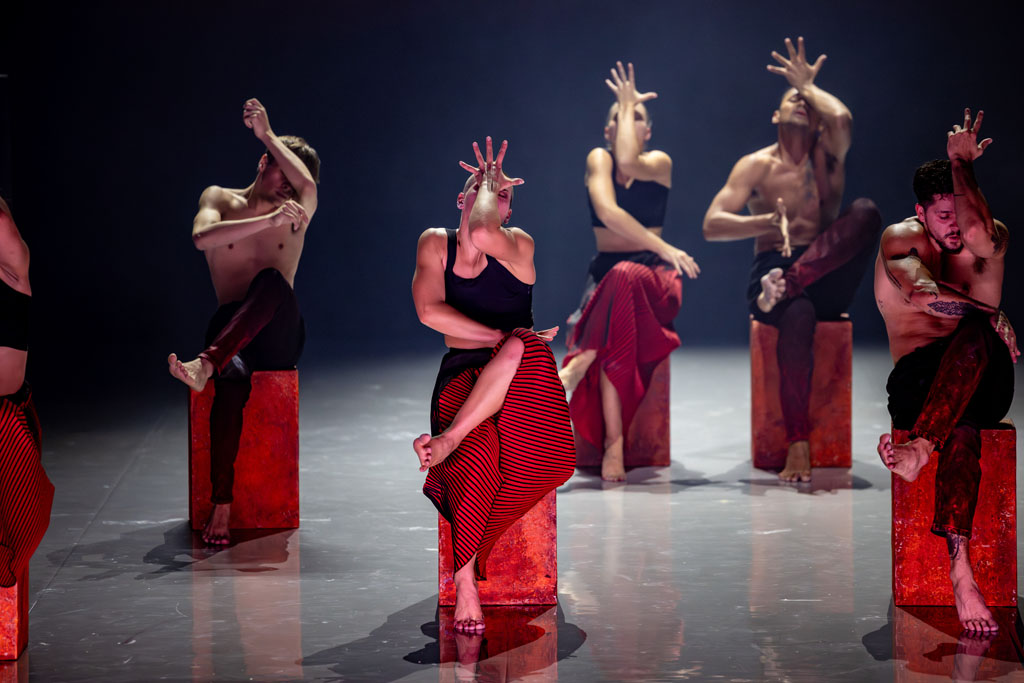
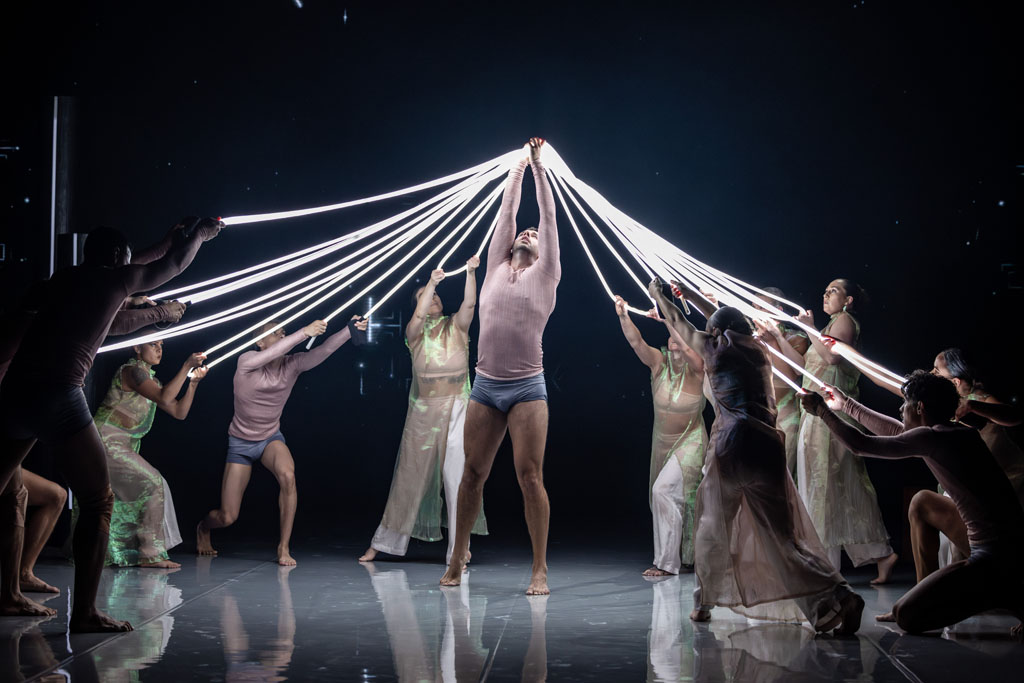
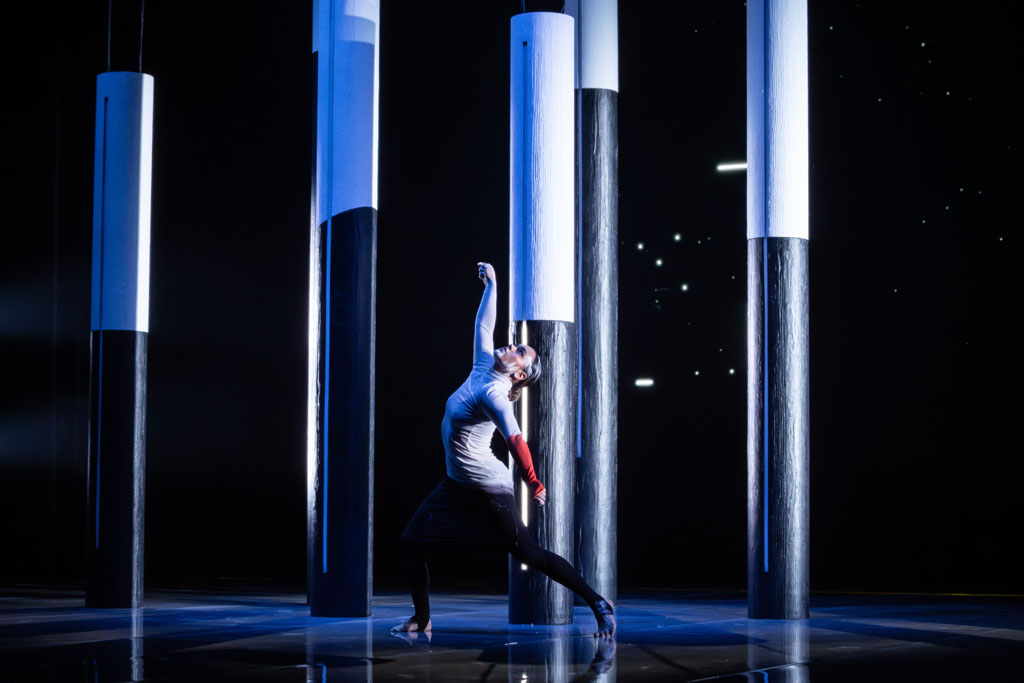
Noting that it’s the first time Bangarra have used a large upstage LED, how did that affect the show? “The screen gave an otherworldly glow and helped create a world that was timeless,” observes Frances. “I loved that it was very futuristic and allowed us to explore a totally new way of telling our stories at Bangarra. It traversed past, present and future but still felt very much tethered to an ancestral energy.”
Darrell Sibosado stated in 2022 that his art involves “..taking these traditional practices and traditional languages into the contemporary space and trying to make people realise that it doesn’t belong way back 1,000 years ago, it belongs here, because I’m here now, and it is me.” Does that make telling these stories with modern technology in contemporary theatre spaces part of the aim of Illume, and if so, how did that inform Frances’ choices in direction and choreography?
“Darrell and I spoke often about the challenges we have faced individually as First Nations artists working in a contemporary space,” declares Frances. “As you can imagine, our mobs are rightfully very protective of their stories and IP. When we work with Community, cultural consultant and elders to create a new work, it’s a process called our Creative and Cultural Lifecycle. It guides everything from firstly seeking permission, research and development on Country, engaging someone to guide the work and, after the work is created and toured, returning it to Country. It’s a four-year process. But during this time, it allows us to build a trusting relationship with the community so they can better understand the work we do and what the outcomes are. Technology is another tool that enables us to tell these ancient stories and give audiences a powerful experience that awakens them to First Nations history, perspectives and worldviews.”
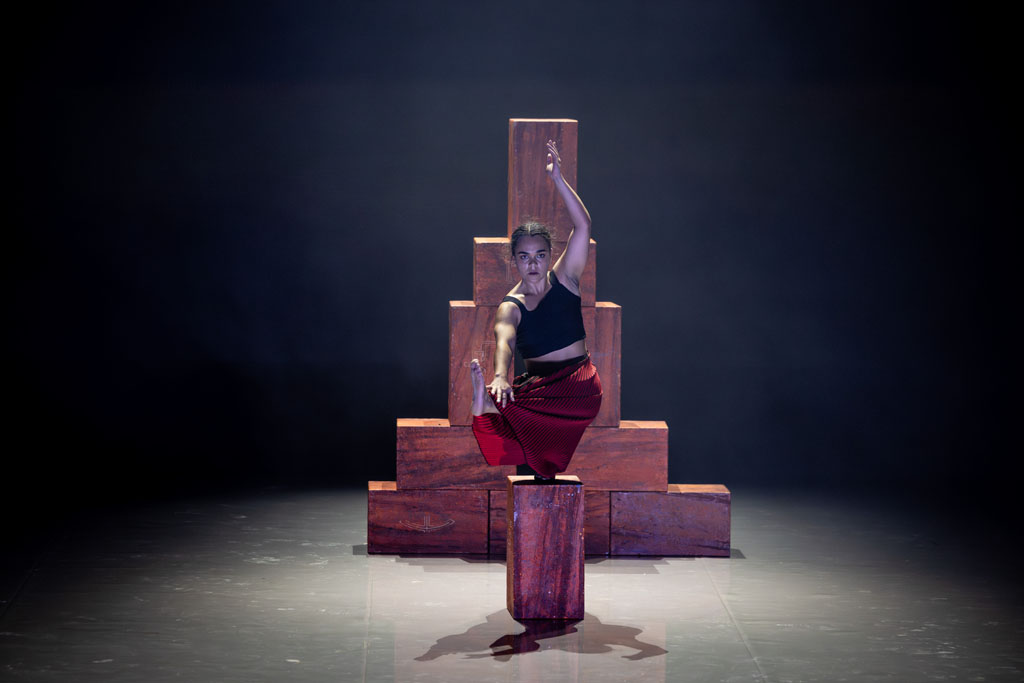
Subscribe
Published monthly since 1991, our famous AV industry magazine is free for download or pay for print. Subscribers also receive CX News, our free weekly email with the latest industry news and jobs.

